GrabCAD
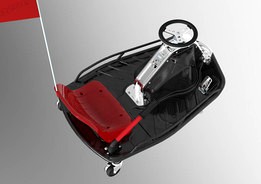
Chrome on Carbon Fiber
by GrabCAD
Last crawled date: 1 year, 10 months ago
My motivation for this entry is to improve on the durability of the current design and fix some of the common issues that users have experienced, as well as add drifting flair through chrome on carbon fiber.
I started my research with a visit to the Razor Crazy Cart facebook page. The uploaded videos mostly consisted of what appeared to be sponsored skaters and drifters either at skate parks or California drift competitions showing off the amazing capabilities of the cart. They were professionally made (some with GoPros) by grown men in front of big crowds with access to lots of smooth pavement, with plenty of carts on hand in case one went down. As a father of two razor-loving children, of course after seeing such a great product, my first instinct was to look into buying one or two myself. A quick Google search later, and views became more grounded. While the cart is fun and has some amazing capabilities, it is clear from the 91 reviews on Google, that the product is in its infancy and needs a few simple fixes to improve its durability.
The first and most obvious issue that consumers are having is that the wheels wear out too quickly. Razor lists the wheels as standard wear items, and they are therefore not covered by the warranty, so consumers were regularly voicing complaints about having to replace the wheels. This would not be an issue if it were a once-a-year occurance, but more than one consumer had complained about having the replace the wheels within a few weeks, with some even having issues after the first hour of use (one father even suggested buying a pack of rollerblade wheels along with the product). Buying a $350 product for your kid for Christmas that he gets to use for an hour is every father's worst nightmare. A quick glance at the Solid Edge model, and the issue was obvious. The polyurethane rollerblade wheels are not right for the application.
Polyurethane wheels revolutionized the skateboarding in the 70's as an asphault-grabbing alternative to the previous bone-jarring clay wheels. Rollerblades then took the experience a step farther with tapered polyurethane to be able to handle both forward linear motion and tight turns. Razor then put the rollerblade wheel on a scooter and a whole new genre was born. Rollerblade wheels are very well suited for forward motion with limited lateral load on the wheel; however, this is not the type of load that the Crazy Cart wheels see. The Crazy Cart is a heavy hunk of steel with a powerful, high-torque electric motor. It gets moving at 10-12 miles per hour, then the user pulls the "emergency break" and all of the energy of that forward motion is transferred laterally to the wheels, which quickly wears them out. My solution to that issue is a simple set of COTS dual wheel casters. The ones I'm showing are McMaster-Carr abrasion resistant black rubber (90A Durometer) dual-wheel (more maneuverable) with a threaded stem. These will last for years, with no sacrifice in capability.
The next issue that consumers are having is that the chain drive constantly pops off and requires maintenance. This is something that almost every consumer (even the ones that gave 4 stars) lists as an issue. One reviewer mentioned that a chain tensioner should be added, but then I saw a tensioner in the model, so I wasn't sure if this is still an issue or not. This can easily be fixed by going to a more heavy duty COTS tensioner. I've included a generic (not made by me) screenshot of one that would help tremendously. I didn't include it in the model because again, I wasn't sure if this is still an issue or if I was just reading an outdated review.
My third design change was to go to a carbon fiber bottom tray. The purpose of this is threefold: it increases performance, adds to the drifting spirit, and generates marketing hype.
The performance advantages of going to carbon fiber are significant. A lot of reviewers listed as a con the term "heavy," and of course a huge steel plate is a very heavy item. By going to carbon fiber the weight is significantly reduced. This is an additional plus for the issues above in that reduced weight means reduced load on the drive assembly, and less chance of popping the chain off. It can also mean less lateral load on the wheels, which will increase their lifespan. The main performance advantage of going to carbon fiber is of course increased speed and longer battery life.
Carbon fiber also isn't as expensive as it seems, especially for this part which lends itself well to switching. Since it's a simple flat plate, you could use a classic laminated plate, or for even more weight reduction, include a honeycomb core. In place of welded on nuts for machine screws, you could add simple click bonded nutplates. There are several companies out there that can easily do an equivalent strength analysis to the current steel plate, and would even go so far as to design/build the mold, and cure and trim the part if you don't want to invest in your own infrastructure.
Another advantage of going to carbon fiber is the marketing attention and hype it would generate. It would likely be the first large-scale, high-end toy made by a major company to include Carbon Fiber as a primary build material in a prominant part of a kids toy. Carbon fiber enthusiasts would go crazy, and just as the razor scooter pioneered the use of inline skates on a scooter, the Crazy Cart would go down in history as the first to make use of carbon fiber as a performance-enhancer on a kids toy. It also looks cool, and it would be as much of a must-have for drifting enthusiasts as for the neighborhood kids on the block.
The final details I added are the chrome parts and the carbon fiber engine covers. This is not so much a design function, as it was easy to do and Keyshot and made it look nice. I included one with chrome seat, and one with the classic crazy cart red. Sure it looks nice, but it would be needlessly cost-prohibitive. Maybe it could be offered as a special edition?
Anyways, so that's my design improvement. Fix the two most common consumer durability complaints (chain popping off and wheels breaking) then change the deck to carbon fiber for added durability and performance. Thanks for reading!
I started my research with a visit to the Razor Crazy Cart facebook page. The uploaded videos mostly consisted of what appeared to be sponsored skaters and drifters either at skate parks or California drift competitions showing off the amazing capabilities of the cart. They were professionally made (some with GoPros) by grown men in front of big crowds with access to lots of smooth pavement, with plenty of carts on hand in case one went down. As a father of two razor-loving children, of course after seeing such a great product, my first instinct was to look into buying one or two myself. A quick Google search later, and views became more grounded. While the cart is fun and has some amazing capabilities, it is clear from the 91 reviews on Google, that the product is in its infancy and needs a few simple fixes to improve its durability.
The first and most obvious issue that consumers are having is that the wheels wear out too quickly. Razor lists the wheels as standard wear items, and they are therefore not covered by the warranty, so consumers were regularly voicing complaints about having to replace the wheels. This would not be an issue if it were a once-a-year occurance, but more than one consumer had complained about having the replace the wheels within a few weeks, with some even having issues after the first hour of use (one father even suggested buying a pack of rollerblade wheels along with the product). Buying a $350 product for your kid for Christmas that he gets to use for an hour is every father's worst nightmare. A quick glance at the Solid Edge model, and the issue was obvious. The polyurethane rollerblade wheels are not right for the application.
Polyurethane wheels revolutionized the skateboarding in the 70's as an asphault-grabbing alternative to the previous bone-jarring clay wheels. Rollerblades then took the experience a step farther with tapered polyurethane to be able to handle both forward linear motion and tight turns. Razor then put the rollerblade wheel on a scooter and a whole new genre was born. Rollerblade wheels are very well suited for forward motion with limited lateral load on the wheel; however, this is not the type of load that the Crazy Cart wheels see. The Crazy Cart is a heavy hunk of steel with a powerful, high-torque electric motor. It gets moving at 10-12 miles per hour, then the user pulls the "emergency break" and all of the energy of that forward motion is transferred laterally to the wheels, which quickly wears them out. My solution to that issue is a simple set of COTS dual wheel casters. The ones I'm showing are McMaster-Carr abrasion resistant black rubber (90A Durometer) dual-wheel (more maneuverable) with a threaded stem. These will last for years, with no sacrifice in capability.
The next issue that consumers are having is that the chain drive constantly pops off and requires maintenance. This is something that almost every consumer (even the ones that gave 4 stars) lists as an issue. One reviewer mentioned that a chain tensioner should be added, but then I saw a tensioner in the model, so I wasn't sure if this is still an issue or not. This can easily be fixed by going to a more heavy duty COTS tensioner. I've included a generic (not made by me) screenshot of one that would help tremendously. I didn't include it in the model because again, I wasn't sure if this is still an issue or if I was just reading an outdated review.
My third design change was to go to a carbon fiber bottom tray. The purpose of this is threefold: it increases performance, adds to the drifting spirit, and generates marketing hype.
The performance advantages of going to carbon fiber are significant. A lot of reviewers listed as a con the term "heavy," and of course a huge steel plate is a very heavy item. By going to carbon fiber the weight is significantly reduced. This is an additional plus for the issues above in that reduced weight means reduced load on the drive assembly, and less chance of popping the chain off. It can also mean less lateral load on the wheels, which will increase their lifespan. The main performance advantage of going to carbon fiber is of course increased speed and longer battery life.
Carbon fiber also isn't as expensive as it seems, especially for this part which lends itself well to switching. Since it's a simple flat plate, you could use a classic laminated plate, or for even more weight reduction, include a honeycomb core. In place of welded on nuts for machine screws, you could add simple click bonded nutplates. There are several companies out there that can easily do an equivalent strength analysis to the current steel plate, and would even go so far as to design/build the mold, and cure and trim the part if you don't want to invest in your own infrastructure.
Another advantage of going to carbon fiber is the marketing attention and hype it would generate. It would likely be the first large-scale, high-end toy made by a major company to include Carbon Fiber as a primary build material in a prominant part of a kids toy. Carbon fiber enthusiasts would go crazy, and just as the razor scooter pioneered the use of inline skates on a scooter, the Crazy Cart would go down in history as the first to make use of carbon fiber as a performance-enhancer on a kids toy. It also looks cool, and it would be as much of a must-have for drifting enthusiasts as for the neighborhood kids on the block.
The final details I added are the chrome parts and the carbon fiber engine covers. This is not so much a design function, as it was easy to do and Keyshot and made it look nice. I included one with chrome seat, and one with the classic crazy cart red. Sure it looks nice, but it would be needlessly cost-prohibitive. Maybe it could be offered as a special edition?
Anyways, so that's my design improvement. Fix the two most common consumer durability complaints (chain popping off and wheels breaking) then change the deck to carbon fiber for added durability and performance. Thanks for reading!
Similar models
grabcad
free

Crazy Cart...!!
...hile drifting. i have increased the length of the cart, only a little. the idea of this design is that it could be a diy project.
grabcad
free

Razor Crazy Cart
...razor crazy cart
grabcad
razor crazy cart
grabcad
free

Razor Crazy Cart Taxi
...d on the cart.
the board design is based on castor boards (used for moving big objects)
update added new render and avi
enjoy
grabcad
free

Razor USA Crazy Cart
...details: http://grabcad.com/challenges/the-get-crazy-razor-crazy-cart-design-challenge. it all starts by downloading these files!
grabcad
free

Razor Crazy Cart Design
...esigning but after 6 hr continuous working i have made this razor crazy cart design rough design. i hope you will like my effort.
thingiverse
free

Replacement sliding blocks for Razor Crazy Cart by teamwittholz
...han 1h. infill close to max, i used 90%.
on the pics you see a white one, which is a worn original one. the red one is self-made.
grabcad
free

Carbon Fiber Hammer
...carbon fiber hammer
grabcad
why someone would need a carbon fiber hammer, i don't know.
cg_trader
free

Carbon Fiber Hammer
...carbon fiber hammer
cg trader
why someone would need a carbon fiber hammer, i don't know.
thingiverse
free
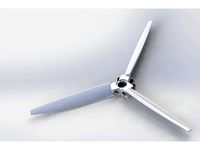
Propellers for heavy lift drones. print with carbon fiber filament, 300mm props by etasinetas
...t was designed to be printed with carbon fiber filament, protopasta, and driven with a brushless 370kv motor, i hope you like it.
grabcad
free

Razor Drift Trike
...you're doing on the crazy cart and you want to rebuild it for a different level of fun. the razor drift trike is your answer.
Fiber
3ddd
$1

Mantra BAMBU предмет интерьера
...(см): 48 цвет плафона: красный, белый, черный материал плафона: fiber glass...
3ddd
$1
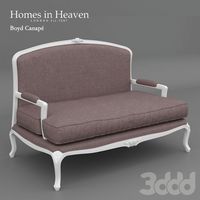
Homes in Heaven Boyd sofa
...- seat cushion: waterfowl feathers and flakes of luxury fiber (comforel) - hand...
3ddd
$1

Homes in Heaven Allegra Petite for kids
...- seat cushion: waterfowl feathers and flakes of luxury fiber ...
3d_ocean
$2
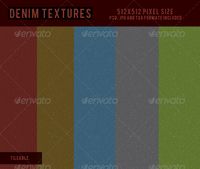
Denim Textures - 1
...blue jeans cgtextures cotton denim fabric fabric textures fade fiber grunge jeans messy pattern texture a pack of 5...
3d_ocean
$3

Old Sacking Texture
...burlap canvas closeup cloth coarse cotton country detail fabric fiber flax grunge linen macro material mesh natural old patch...
3d_ocean
$2

2 Geometric Fabric Tile Able Textures
...abstract background brown burlap canvas clothing coat diamonds fabric fiber geometric geometric pattern knit knitting linen lines material pattern...
3d_ocean
$5
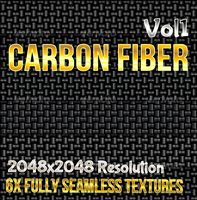
Carbon Fiber Vol1
...48 in size and the resolution is 300 dpi. both png and jpg image formats are included in the pack. high resolution and seamles...
3d_ocean
$4

Old Sacking Texture
...abstract background brown burlap canvas clothing coat diamonds fabric fiber geometric geometric pattern knit knitting linen lines material pattern...
3d_ocean
$2
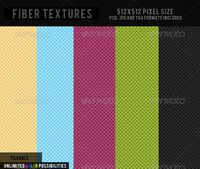
Fiber Textures
...extures. tileable and editable. 512×512 pixel sized. jpg , tga image format given. unlimited color possibilities. stay connected
3d_ocean
$4

Knitted wool texture
...wool texture 3docean cardigan clothing color cotton fabric fashion fiber homemade knit knitted knitting mesh natural organic part pattern...
Carbon
3d_export
$25

Merida Cyclo Cross Carbon Team 2012 frame set 3D Model
...cross carbon 2012 fork textured team printable
merida cyclo cross carbon team 2012 frame set 3d model maisterunner 50751 3dexport
3d_export
$39

Matte Blue BearBrick 3D Model
...matte blue bearbrick 3d model 3dexport 3dbearbrick bearbrick carbon actionfigure medicom toy collection series20 series1000 mattebluebearbrick matteblue matte...
3ddd
$1
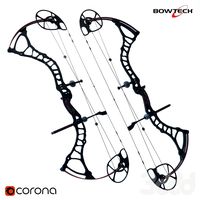
Bowtech Carbon Rose
...bowtech carbon rose
3ddd
лук , спорт конкурс
bowtech carbon rose
high poly модель
3ddd
$1
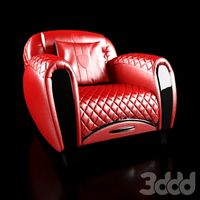
Formitalia / Carbon Imola
...formitalia / carbon imola
3ddd
formitalia
carbon imola armchair by formitalia tonino lamborghini casa. 105*100*85cm
3ddd
$1

Беговая дорожка
...сеть 220 вольт производитель: neotren gmbh, германия страна изготовления: кнрhttp://xn-----6kcaggddlgelfo3brwwda5b8g6f.xn--p1ai/begovye-dorojki-carbonbegovaya-dorozhka-carbon-yukon-hrc ...
3ddd
$1
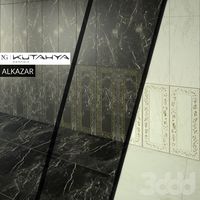
KUTAHYA SERAMIK ALKAZAR
...seramik alkazar wall tile alkazar white rectified, 30x90 alkazar carbon rectified, 30x90 alkazar white rectified, 30x75 alkazar carbon rectified,...
3ddd
$1

Стул Moooi Carbon Chair
...стул moooi carbon chair
3ddd
стул , moooi
стул carbon chair
производитель mooi
3d_ocean
$2

Carbon Textures
...usty shiny tga tileable
a pack of 5 carbon textures. tileable. 512×512 pixel sized. jpg , tga image format given. stay connected
3d_ocean
$3

Carbon Monoxide Alarm
... also substitute as a smoke detector. includes high quality normal map and choice of 1024×1024 or 2048×2048 diffuse face texture.
3d_ocean
$5
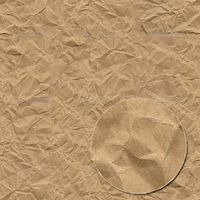
Paper Textures
...paper textures 3docean bag blotting paper bond brown carbon paper cardboard carta disposable folds insubstantial paper paper-thin papery...
Chrome
3d_export
$15

Blue Glass Bidet 3D Model
...interior detailed vray mental ray blue glass bidet transparent chrome blue glass bidet 3d model cgaxis 57254...
3d_export
$13

Wall Towel Hanger 3D Model
...bathroom bath water interior detailed vray mental ray white chrome towel hanger hanging hang wall wall towel hanger 3d...
3d_export
$13
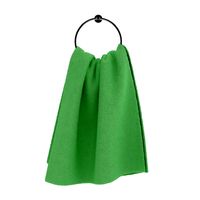
Wall Towel Hanger 3D Model
...bathroom bath water interior detailed vray mental ray white chrome towel hanger hanging hang wall wall towel hanger 3d...
3d_export
$19

Tap 3D Model
...tap 3d model 3dexport plambing faucet crane water tap chrome tap 3d model archicube.3d 73176...
3d_export
$15
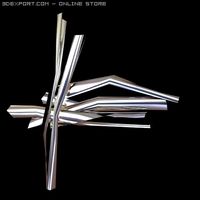
Wall decorative accessory 3D Model
...wall decorative accessory 3d model 3dexport sculpture abstract artwork chrome wall hanging art beam rail steel decorative accessory contemporary...
3d_export
$25

Keyboard Synthesizer 3D Model
...c4d detailed music instrument sound studio keyboard workstation key chrome metal keyboard synthesizer 3d model cgaxis 70058...
3d_export
$25

Keyboard Workstation 3 3D Model
...c4d detailed music instrument sound studio keyboard workstation key chrome metal keyboard workstation 3 3d model cgaxis 70062...
3d_export
$20

Red Flower in Chrome Pot 3D Model
... plant green 3ds max vray c4d cinema interior foliage white leaf pot vase
red flower in chrome pot 3d model cgaxis 64428 3dexport
3ddd
$1
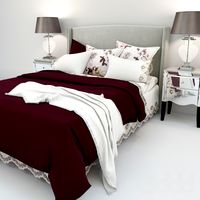
Next Olsen bed & Gatsby Bedside Table
...olsen , gatsby next olsen bed gatsby bedside table chrome glass table lamp. linens: anthropologie eyelet embroidered sheet set,...
3ddd
$1

Orgue by Lalique
...diameter: 7.08 in weight: 13.23 pounds materials and finish: chromeplated or gilded, hand polished clear satin crystal or gold...
